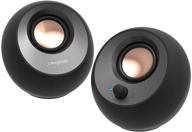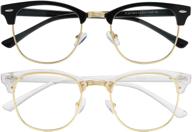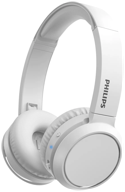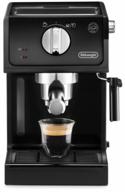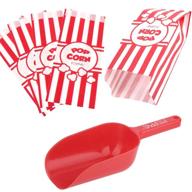How to mold dental appliances with base plate wax sheets?
Base plate wax sheets are commonly used in dentistry to create custom models and appliances. With some simple steps, you can use these versatile wax sheets to make a variety of dental molds.
Prepare the wax
Start by cutting an appropriate size sheet of base plate wax to fit your mold frame. The wax should extend 1-2 mm beyond the borders of the frame. To soften the wax for manipulation, immerse it in warm water (150°F/65°C) for 1-2 minutes until pliable. Be careful not to overheat as the wax can become too soft.
Adapt the wax
Remove the softened wax sheet and adapt it to the cast or oral anatomy you are molding. Spread it over the model surface and press into anatomical contours with your fingers. Use wax carving instruments as needed to refine details. Work efficiently before the wax cools and hardens.
Contour and trim
- Smooth out any roughness with a wax spatula dipped in alcohol.
- Trim away excess wax beyond the borders with a hot wax knife or spatula.
- Refine anatomical extensions as needed with wax adding instruments.
Apply retention
Add mechanical retention features as needed - perforations, mesh wire, beads - to help stabilize the dental material being molded. Use a wax pen, spatula or carver.
Chill and remove
- Immerse the waxed model briefly in chilled water.
- Carefully remove the chilled wax mold from the model.
- Inspect for defects and trim/modify as needed.
With practice, base plate wax can be adapted into detailed, customized molds for fabrication of dental restorations, bleaching trays, orthodontic appliances and more.
Top products in 💄 Cosmetics & Restoratives
How to make wax patterns for casting metal denture frameworks?
Fabricating accurate wax patterns is crucial for casting high-quality metal denture frameworks. With careful waxing technique, you can produce detailed replicas for precision castings.
Prepare the cast
- Articulate casts properly for full anatomy.
- Isolate the model with a separator for easy wax removal.
- Apply die spacer for thickness control.
Similar products
Adapt the framework wax
Contour a sheet of thin, rigid green framework wax over the cast model to create the baseplate. Adapt larger sections first then work in details. Use wax carvers to perfect extensions and peripheral roll.
Add wrought wire components
If needed, incorporate wrought wire shapes to reinforce the framework. Adapt them into the wax pattern and blend baseplate wax over interfaces.
Apply relief
- Provide 2-3 mm clearance for acrylic denture teeth.
- Add relief over bony undercuts and soft tissue.
- Refine with wax carvers and alcohol-wetted spatula.
Perforate the wax
Create a hole pattern through the wax using a wax pen, carver, or perforating tool. This allows the molten alloy to penetrate and fill the mold.
Add sprues and vents
Attach sprue formers to the pattern, oriented towards the heaviest sections. Add venting at contours. Seal sprues/vents to pattern with more wax.
Inspect and chill
- Verify all details, extensions and openings.
- Immerse framework in chilled water to harden.
- Carefully remove hardened wax pattern from the model.
With meticulous waxing and casting technique, you can produce accurately fitting metal denture frameworks.
How to soften base plate wax for manipulating wax dentures?
When making adjustments to wax denture trials, it's crucial to properly soften the base plate wax in order to manipulate it without damage. Using controlled heat sources and water temperature can help make the wax malleable without distortion.
Use a wax pot
An electric wax pot with temperature control allows precision heating of wax. Set the pot temperature to 150-155°F to slowly bring the wax to optimal softness.
- Immerse the wax trial in the pot for 2-3 minutes.
- Agitate gently to evenly disperse heat.
- Monitor wax edges for first signs of softening.
Try a water bath
Immersing wax in a warm water bath can also be effective for careful softening.
- Heat clean water to 155-160°F.
- Submerge the wax for 1-2 minutes, moving it around.
- Remove wax once softened and pliable.
Use dry heat
Briefly warming the wax under a heat lamp or with a hair dryer on low setting can help soften targeted areas:
- Heat problem spots for 5-10 seconds.
- Test softness and reheat as needed.
- Avoid overheating as wax can slump.
Work efficiently
Once the wax is softened:
- Make adjustments quickly before wax cools and hardens.
- Use instruments and gloves wetted with alcohol for smoothing.
- Drop wax back into warm water if it starts to stiffen.
With practice, you'll gain a feel for efficiently softening wax for denture adjustments. Be patient and use mild heat to prevent damage.
How to find the right thickness of utility wax sheets for your project?
Utility wax sheets come in a range of thicknesses for different applications. Selecting the proper thickness for your dental project can help ensure optimal results.
Consider the application
- Thinner 0.5mm wax for fine detail and carving
- 1-2mm wax for crowns and bridges
- Thicker 3mm wax for occlusal rims and baseplates
Factor in strength
Thicker utility wax provides more strength and durability for appliances that require more rigidity and resistance to fracture.
Assess softness needs
Softer, more pliable wax in thinner sheets allows for easier manipulation. Thicker wax is more rigid until warmed.
Test wax adaption
Gauge how well wax conforms to models or oral structures without slumping or tearing.
- Thinner wax flows into details
- Thicker wax resists slumping from heat/pressure
Consider final thickness
Account for final thickness needed after adapting and trimming:
- Crowns require 1-1.5mm final thickness
- Occlusal rims need at least 3-4mm thickness
Allow for adjustments
Thicker wax provides more margin for adjustment by grinding or carving.
Order samples
Request a variety pack of utility wax thicknesses to test which adapts best for your needs.
With experience, you'll learn ideal utility wax thicknesses for different applications. The proper thickness helps ensure success.
How to store base plate wax properly to prevent deformation?
Proper storage of base plate wax is important to maintain its integrity and prevent distortion. Following key guidelines can help keep your wax in optimal condition.
Control temperature
Store wax in a stable environment away from heat sources. Ideal is room temperature 65-75°F.
- Avoid hot storage areas near equipment.
- Don't refrigerate or freeze wax.
Use airtight containers
Keep wax sealed in plastic bags or airtight cases to prevent drying out.
- Double-bag wax sheets for extra protection.
- Store carved wax patterns in cases.
Separate wax types
Different waxes can adhere together, so store by type.
- Group baseplate, carving, and contour waxes.
- Keep framework wax separate.
Manage inventory
Organize wax sheets by date and rotate older stock to the front. Use oldest waxes first before deterioration occurs.
Avoid compression
Stack wax flat and evenly support both sides to prevent bending or warping.
- Alternate sheet direction if stacking.
- Don't place heavy objects on wax.
Inspect periodically
Check stored wax 1-2 times per year for subtle changes in flexibility or surface quality.
With proper storage methods, base plate wax can maintain optimal performance for years.
How to clean base plate wax residue from your tools and equipment?
Working with base plate wax often leaves behind a stubborn residue. Removing the remaining wax helps keep your tools functioning properly and prevents cross-contamination.
Use steam
A steam cleaner can melt away dried wax buildup from metal tools and equipment.
- Hold steam tip 2-3 inches away.
- Slowly pass over until wax dissolves.
- Wipe away melted wax with paper towel.
Try alcohol
Isopropyl alcohol helps dissolve wax residue.
- Dip tools in or wipe down with 70% isopropyl alcohol.
- Rub away remaining wax with microfiber cloth.
- Rinse and allow to fully dry.
Scrub with soap
For equipment like wax pots, use soap and water to scrub away buildup.
- Apply diluted dish soap and scrub with a soft brush.
- Rinse thoroughly with clean water to remove soap.
- Dry fully to prevent water spots.
Replace accessories
Over time, some accessories may need replacement if wax residue cannot be removed:
- Heat-resistant mats
- Silicone tips
- Stainless steel bowls
Prevent future buildup
To reduce wax sticking:
- Keep tools well-lubricated.
- Apply mold release to equipment.
- Work in a temperature-controlled area.
Staying on top of wax removal keeps your workflow smooth and tools in their best condition.
How To Use ANNWAH Dental Base Plate Wax For Denture Molding?
Here are the steps to use ANNWAH Dental Base Plate Wax for denture molding:
- Soften the wax by heating it in warm water or using a heating tool.
- Take a small piece of wax and shape it into a ball.
- Place the wax ball onto the denture base and press it down gently.
- Use your fingers or a carving tool to shape the wax to fit the contours of the denture base.
- Repeat the process until the entire denture base is covered with wax.
- Check the fit of the wax mold on the denture base and make any necessary adjustments.
- Once you are satisfied with the fit, remove the wax mold and use it as a guide to create the final denture base.
Another interesting products
What Are The Different Types Of Dental Waxes And Their Textures?
There are different types of dental waxes, and they can be classified according to their use, origin, and ISO classification. The different types of dental waxes share the same physical properties, such as melting range, thermal expansion, and distortion of the wax pattern. Here are the different types of dental waxes and their textures:
- Pattern waxes: used for making patterns for inlays, casting, and baseplates. They can be soft, medium, or hard, depending on their intended use.
- Processing waxes: used for boxing, utility, and sticky types. They can be soft, medium, or hard, depending on their intended use.
- Impression waxes: used for bite registration and correction types. They can be soft, medium, or hard, depending on their intended use.
- Inlay waxes: soft and used for contours and veneers. They have a flow that is dependent on residual stress.
- Baseplate waxes: medium and used for temperate climates. They have a linear thermal expansion from 25° to 40°C of less than 0.8%.
- Sticky waxes: hard and used for tropical climates. They have the least flow and the highest ductility.
- Casting waxes: used for partial denture frameworks and other metal frameworks.
- Modeling waxes: used for creating models of prostheses and bridges that can be fitted into the patient’s mouth and easily altered where needed.
Overall, dental waxes have different textures depending on their intended use and composition. They can be soft, medium, or hard, and have different flow and thermal expansion properties.
What Are Some Examples Of Dental Procedures That Use Pattern Wax With A Different Texture?
Pattern wax is used in various dental procedures to create patterns for inlays, casting, and baseplates. Here are some examples of dental procedures that use pattern wax with a different texture:
Overall, pattern wax is used in various dental procedures to create patterns for inlays, casting, and baseplates. The texture of pattern wax can vary depending on the type of wax and its intended use, and it must exhibit good flow and be able to reproduce fine details.






